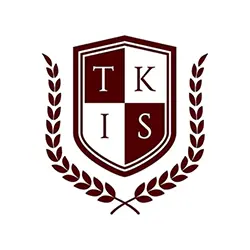Introduction To The British Education System
The British education system is one of the world’s oldest and most widely recognised, serving as both a model and a reference point for educational frameworks in many countries. Known for its rigour, structure, and comprehensive curriculum, the UK education system offers a clear pathway from early childhood education to higher education, with various stages catering to different age groups and academic abilities. This article will explore the organisation, structure, and stages of education in the United Kingdom, examining key phases of schooling, from primary education to secondary school and beyond. We will also explore the flexibility of the system, as well as the options available to students after secondary school.
An Outline Of The Many Levels Of UK Education
In the United Kingdom, education is divided into different stages based on the age and academic needs of students. These stages include early years education, primary education, secondary education, and post-secondary education. The education system is primarily divided into:
Primary Education: Ages 4-11
Secondary Education: Ages 11-18
Post-Secondary Education: Ages 16+
Primary Education: The Foundation Years
Primary education in the UK is the first stage of formal schooling, and it typically starts at the age of 4 or 5. Primary schools in the UK provide education to children up to the age of 11, covering Key Stages 1 and 2 of the national curriculum. The goal during these early years is to establish a solid foundation in essential subjects, such as reading, writing, mathematics, and basic sciences.
Age Groups And Structure Of UK Primary Schools
Starting in Reception and continuing through Years 1–6, primary education in the United Kingdom usually begins around the age of 4 or 5. Its primary goals are the development of basic reading, writing, arithmetic, and social skills. This phase is all about laying the groundwork for later success in areas like science, English, and mathematics while also encouraging a love of learning and a sense of wonder.
Reception (Age 4-5): The Reception year serves as the first year of primary education and helps children transition from early childhood to formal schooling. This year focuses on play-based learning, socialisation, and laying the groundwork for basic academic skills.
Key Stage 1 (Ages 5-7): Key Stage 1 consists of Year 1 and Year 2, where children begin to develop fundamental skills in reading, writing, mathematics, and basic sciences. They are also introduced to subjects like art, music, and physical education.
Key Stage 2 (Ages 7-11): This stage covers Years 3 to 6, where students delve deeper into subjects such as English, mathematics, history, geography, science, and religious education. By the end of Key Stage 2, students will typically undergo assessments in English and mathematics.
Key Stages of Secondary Education
Key Stage 3 (Ages 11-14): Students in Years 7 to 9 study a broad and balanced curriculum. This includes core subjects such as English, mathematics, and science, along with a variety of other subjects like History, Geography, Physical education, Art, and Technology. The goal during Key Stage 3 is to provide a solid foundation in all subject areas.
Key Stage 4 (Ages 14-16): This stage includes Years 10 and 11, where students begin to specialise and prepare for their General Certificate of Secondary Education (GCSE) exams. Students typically take a set of exams in subjects like English, Mathematics, Science, and a Foreign language. The results of these exams play a significant role in determining students’ future educational or career pathways. GCSEs are usually taken at the age of 16 and mark the end of compulsory education in the UK.
Key Stage 5 (Ages 16-18): After completing their GCSEs, students have the option to continue their education at a sixth-form college or a vocational school. Sixth-form education allows students to specialise in subjects of their choice, usually taking A-levels (Advanced Level) or vocational qualifications such as BTECs (Business and Technology Education Council). A-levels are subject-specific qualifications that are necessary for entry into universities, while BTECs provide practical skills for vocational pathways.
Independent and Online Schools: Alternative Educational Paths
In addition to the traditional state-funded schools, there are also independent schools and online learning platforms that provide alternative routes for students to pursue their education.
Thomas Keith Online Independent School, for example, is one such online educational institution that offers personalised learning options for students who prefer a more flexible learning environment. This type of school allows students to access lessons from home and work at their own pace, while still adhering to the national curriculum.
Independent schools, which are privately funded, also provide specialised education with smaller class sizes, more individualised attention, and often a focus on specific academic or extracurricular pursuits.
Post-Secondary Education: Beyond the Classroom
Once students complete their secondary education, they have several options for continuing their learning. The choices largely depend on their GCSE results and future aspirations.
Sixth Form and College: As mentioned earlier, students can choose to attend a sixth-form college to pursue A-levels or other academic qualifications. This option prepares students for university entry or advanced vocational qualifications.
Vocational Education and Apprenticeships: For those interested in gaining practical experience and skills, vocational education or an apprenticeship can be a viable option. Apprenticeships combine on-the-job training with academic study and are often offered in sectors like engineering, healthcare, and business.
University: Many students choose to attend university to pursue higher education. The UK has a wide range of prestigious universities that offer undergraduate degrees in various fields. Admission is typically based on A-level results or equivalent qualifications, and students apply through UCAS (Universities and Colleges Admissions Service). University education usually takes three years for a standard undergraduate degree or four years for a degree with a placement year or a specialised programme.
Further Education and Training: Alternatively, some students may choose further education programmes or specialised training that focuses on specific career skills or areas of interest.
FAQs
1. What is the difference between a state school and an independent school in the UK?
State schools are government-funded and free for students, while independent schools require tuition fees and offer specialised curriculums and smaller class sizes.
2. What are GCSEs and why are they important?
GCSEs are qualifications taken at age 16 that determine future education and career pathways. They are essential for university admissions and vocational training.
3. What are A-levels and how do they differ from GCSEs?
A-levels are advanced academic qualifications taken after GCSEs, focusing on a few subjects in depth, whereas GCSEs cover a broader curriculum.
4. What is an apprenticeship?
An apprenticeship combines work experience with study, allowing students to gain practical skills while earning a wage.
5. What is the role of UCAS?
UCAS is the university admissions service in the UK, managing applications to higher education institutions.
Conclusion
The British education system is comprehensive, and structured, and offers a wide variety of paths to suit different learning styles and career aspirations. Whether a student wishes to pursue academic qualifications like A-levels or take a more vocational route through apprenticeships, the system offers numerous opportunities for both personal and professional development. The key to success in the British educational landscape lies in understanding the various stages and how they align with one’s academic goals and interests.




